Residential restoration is constantly evolving, incorporating new technologies and aesthetic trends that breathe life into historic and aged homes. This year, several groundbreaking trends have emerged, reshaping how homeowners approach restoration projects. In a world where the past and present merge to create unique living spaces, being in the know about these trends can transform an ordinary restoration project into an extraordinary one. Let’s dive into the top residential restoration trends that are setting the pace for modern living spaces.

The Rise of Smart Technology in Historical Homes
Integrating smart technology into historical homes is not just about adding convenience; it’s about enhancing the living experience while preserving the essence of the historical architecture. As homeowners seek to retrofit their ancient abodes with modern amenities, the challenge often lies in ensuring that these updates do not compromise the home’s original character. Yet, it’s this balance between the old and new that makes smart technology such a pivotal trend in residential restoration. From smart thermostats that learn your temperature preferences to advanced security systems that blend seamlessly with antique decor, the possibilities are endless.
The appeal of smart homes is undeniable, but when it comes to historic properties, the approach is less about converting and more about complementing. Homeowners are increasingly opting for non-invasive upgrades that can be reversed or removed without damaging the original structures. This includes using wireless systems, hidden cabling, and smart devices that can be controlled remotely, ensuring the historical integrity of the home remains intact.
Sustainable Materials and Practices
Sustainability is a buzzword in nearly every industry, and residential restoration is no exception. Today, there is a growing emphasis on using sustainable materials and practices that not only benefit the environment but also contribute to healthier living spaces. This trend has seen a rise in the use of reclaimed wood, eco-friendly paints, and energy-efficient lighting fixtures. Aside from being environmentally responsible, these materials add a layer of authenticity and charm to restoration projects, aligning perfectly with the ‘revive rather than replace’ ethos prevalent in residential restoration today.
Blending Old with New: Modern Interiors in Classic Structures
The juxtaposition of modern design within historic frameworks has become one of the most exhilarating trends in residential restoration. This approach is not about masking the old but rather highlighting it with the new. By introducing contemporary furniture, bold color schemes, and avant-garde artwork into classic interiors, homeowners create a dialogue between eras that is both provocative and harmonious. This blend not only pays homage to the original architecture but also redefines its relevance in the current day, adding a layer of sophistication and allure that is uniquely captivating.
The Popularity of Minimalistic Restoration
Minimalism in residential restoration represents a shift towards simplicity and functionality. This trend challenges the inclination to fill historic homes with period-specific decor, instead advocating for decluttered spaces that emphasize architectural features. Minimalistic restoration strategies often involve preserving the home’s inherent charm while introducing streamlined furniture, neutral color palettes, and unobtrusive decorations. This ‘less is more’ approach not only amplifies the beauty of the architecture but also facilitates a tranquil and spacious living environment.
Craftsmanship and Artisanal Techniques Make a Comeback
In an era where mass production dominates, there’s a renewed appreciation for the bespoke and handcrafted, particularly in the realm of residential restoration. Homeowners are increasingly seeking out skilled artisans who specialize in traditional crafts such as stonemasonry, woodworking, and decorative plastering. This inclination towards craftsmanship not only ensures a high level of detail and authenticity in restoration projects but also supports local industries and preserves age-old techniques for future generations. The tactile, aesthetic, and emotional value of artisanal elements cannot be replicated by modern machinery, making this trend a celebration of human ingenuity and history.
Adaptive Reuse: Giving Old Buildings New Life
Adaptive reuse is a practice that has gained considerable traction in the field of residential restoration. It involves repurposing old, often abandoned buildings for new uses while retaining their historical and architectural significance. This trend is driven by a desire to conserve resources, reduce waste, and breathe new life into buildings that might otherwise be neglected or demolished. From converting industrial warehouses into loft apartments to transforming churches into serene homes, adaptive reuse is an innovative approach to preservation that marries the old with the new in imaginative and sustainable ways.
Looking Forward: The Future of Residential Restoration
Embracing these residential restoration trends not only enhances the aesthetics and functionality of your home but also ensures it remains a contemporary nod to the past, all while incorporating the conveniences and design sensibilities of today. As we continue to witness an exciting blend of technology, sustainability, and traditional craftsmanship in restoration projects, the future of residential restoration looks promising. Whether you’re planning a full-scale renovation or a simple refresh, considering these trends can help you create a space that’s both timeless and timely.
Let’s build something exceptional together — start with your
Free Consultation

